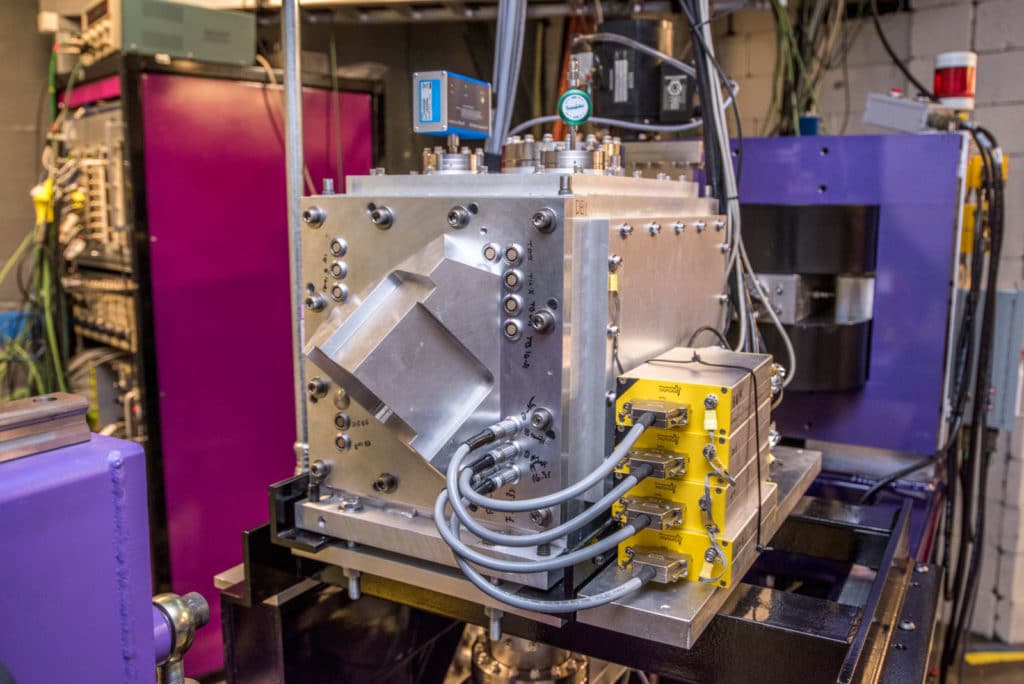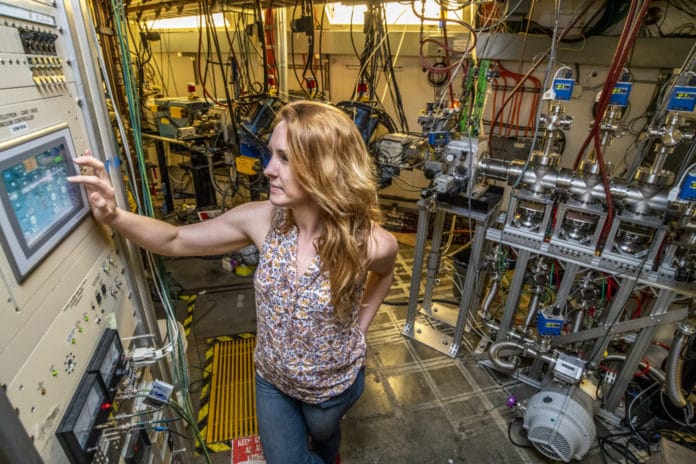Scientists at the Lawrence Berkeley National Laboratory (Berkeley Lab) have recently created isotope called Mendelevium-244. This is a new form of human-made element mendelevium.
Initially created in 1955 by Berkeley Lab scientists, Mendelevium is an element with more or fewer neutrons (uncharged particles) in its atomic nucleus than other forms of a component.
Using Berekely Lab’s 88-inch Cyclotron, scientists created mendelevium-244. A cyclotron is a type of particle accelerator that was invented by the Lab’s namesake, Ernest O. Lawrence, in 1930. The cyclotron optimizes strong beams of charged particles at the target to create atoms of heavier elements.
Jennifer Pore, a Berkeley Lab project scientist who led the study detailing the isotope’s discovery, said, “It was challenging to discover this new isotope of mendelevium because all of the neighboring mendelevium isotopes have very similar decay properties. Alpha decay describes the process by which a radioactive element like mendelevium breaks down into lighter elements over time.”
“We measured the properties of 10 atoms of mendelevium-244 for the study.”
“Each isotope represents a unique combination of protons and neutrons. When a new isotope is discovered, that particular combination of protons (positively charged particles) and neutrons has never been observed. Studies of these extreme combinations are critical toward our understanding of all nuclear matter.”
Through this discovery, scientists also provided the first direct evidence for a decay process involving an isotope of the element berkelium.

Scientists found that the Mendelevium-244 consists of two individual separate chains of decay. Each chain leads to a different half-life: 0.4 seconds and 6 seconds, based on different energy configurations of particles in its nucleus. A half-life is the time it takes for a radioactive element’s number of atoms to be reduced by half as their nuclei decay into other, lighter nuclei.
In another measurement, scientists found evidence of the alpha decay process of berkelium-236, an isotope of the element berkelium, as it transforms into americium-232, a slightly lighter isotope.
The discovery was made possible using the 88-inch Cyclotron called FIONA, or For the Identification Of Nuclide A. The “A” in FIONA represents an element’s mass number, which is the total number of protons (positively charged particles) and neutrons (uncharged particles) in an atom’s nucleus. The new isotope’s mass number is 244.
Pore said, “The most important tool that we had in this discovery was FIONA. The most important tool that we had in this discovery was FIONA.”
Barbara Jacak, Nuclear Science Division director at Berkeley Lab, said, “We built FIONA to enable discoveries like this one, and it is exciting to see this instrument hitting its stride.”
Michael Thoennessen, a University Distinguished Professor at Michigan State University, said, “Isotope discoveries are cyclical and depend on new accelerators and major advances in experimental equipment development. Berkeley Lab’s FIONA and the Facility for Rare Isotope Beams (FRIB), a U.S. Department of Energy user facility in development at Michigan State University, are unique capabilities with large discovery potential for different types of new isotopes in the U.S.”
“To ensure that FIONA’s measurements were accurate, the research team first measured the decay properties and mass numbers of known mendelevium isotopes, including mendelevium-247, mendelevium-246, and mendelevium-245.”
“Once we were confident that we were well-versed in the properties of these light mendelevium isotopes, we attempted the experiment to discover the previously unobserved isotope mendelevium-244. Without the direct confirmation that we had produced an isotope with a mass number of 244, it would have been challenging to disentangle the results and prove the discovery.”
Journal Reference:
- J. L. Pore et al., Identification of the New Isotope Md244, Physical Review Letters (2020). DOI: 10.1103/PhysRevLett.124.252502
